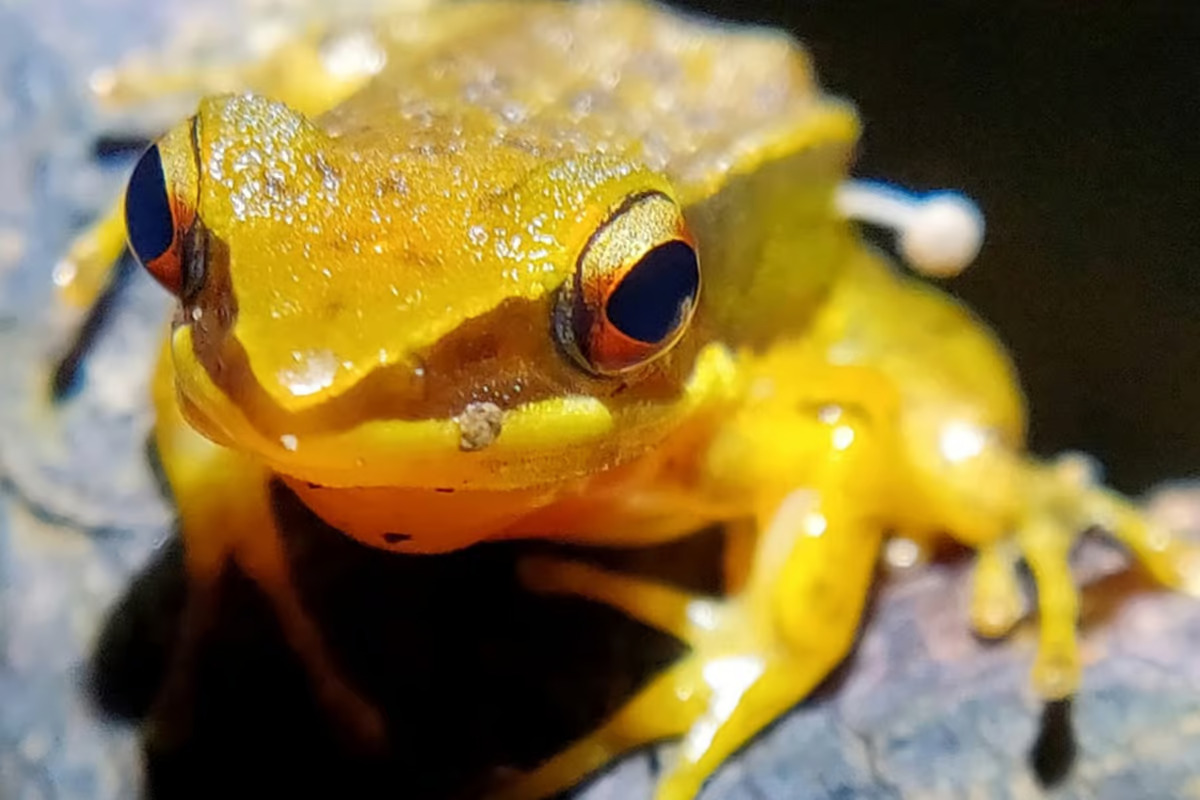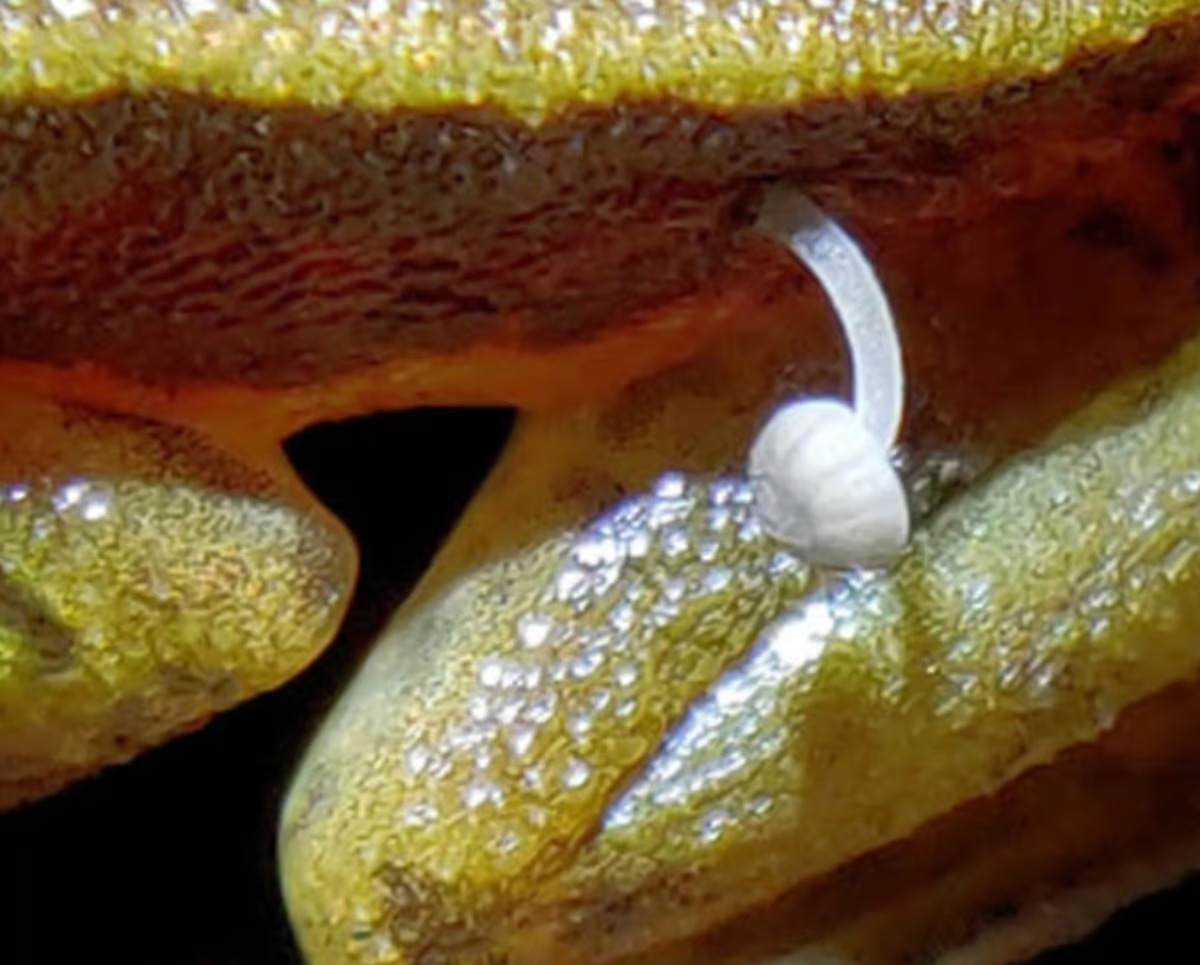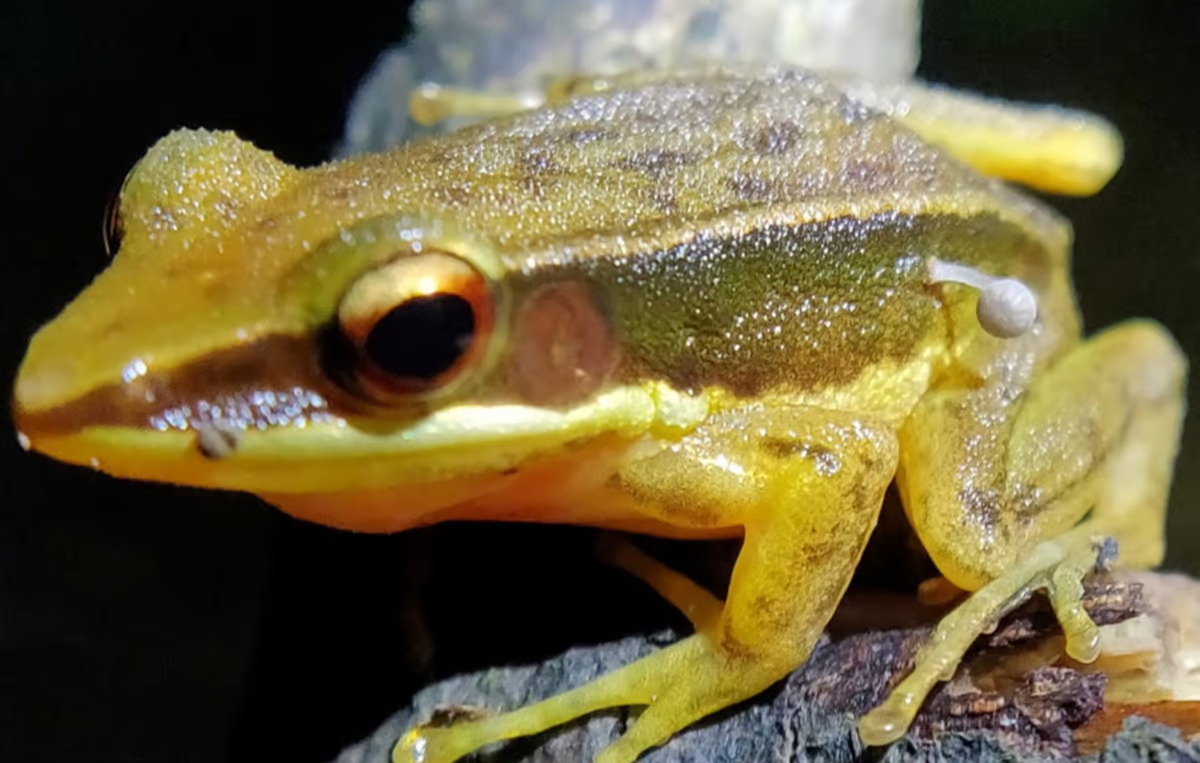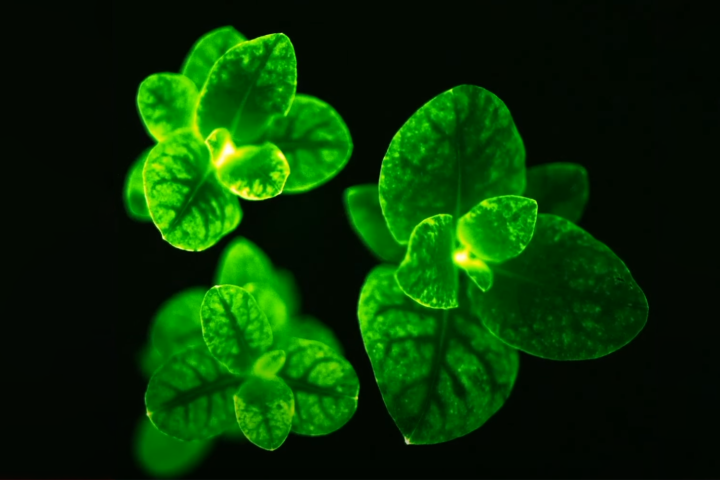 Fungal friend or foe? We may never know. Lohit Y.T./WWF-India –
Fungal friend or foe? We may never know. Lohit Y.T./WWF-India –
While fungi invasions are fairly common in the small-animal world, this growth appeared to be very different from the zombie parasitic types that spell bad news for their hijacked hosts.
The fungus-accessorizing Rao’s Intermediate Golden-backed Frog (Hylarana inter-media) was discovered by scientists out on a nature walk at the foothills of the Kudremukh Range in India’s Western Ghats mountains. Despite this species being on the small size – between one to two inches in length – its bright coloring makes it easy to spot.

The frog in question, however, stood out from the crowd for another reason. Perched on a twig, the watchful amphibian had something never seen in nature before: a single stalked fungus growing out of its left flank, complete with pileus – the distinctive cup synonymous with mushrooms. The growth was later identified through images as a bonnet mushroom (Mycena sp.), most often spotted sprouting from rotting wood.
The scientists noted that the frog appeared healthy and otherwise unbothered by its freeloading fungal companion, which looked to be taking full advantage of the nutrients found on moist amphibian skin. However, it’s unknown whether the fungus was friend or foe, as the researchers did not collect the animal for further study.

As for the mushroom, this new territory could very well be a clever strategy. The pileus is spore-bearing, and generally relies on wind, water or accidental transport to spread and reproduce. Hitching a ride on a frog could help spread those spores – and in turn the fungal species – over further distances, growing the colony.
Alternatively, the researchers have located patient zero in an impending The Last of Us-style fungi takeover.
“To the best of our knowledge, never has a mushroom sprouting from the flank of a live frog been documented,” the team noted.
Details of the discovery were published in the journal Reptiles and Amphibians.
Source: WWF India State Office View gallery – 3 images
–
Tags
























